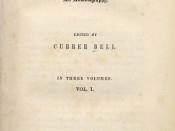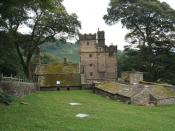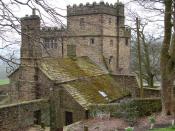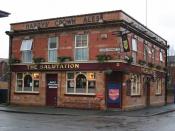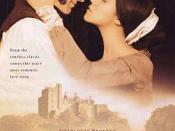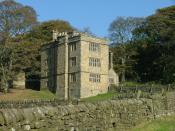ÃÂI bent forward: first surprise, then bewilderment, came over meÃÂ this was not Sophie, it was not Leah ÃÂ The shape standing before me had never crossed my eyes within the precincts of Thornfield Hall beforeÃÂ Its seemed, sir, a woman, tall and largeÃÂ It was a discoloured faceÃÂit was a savage face. I wish I could forget the roll of the red eyesÃÂ the lips were swelled and darkÃÂ Shall I tell you of what it reminded me? ...the vampire.ÃÂ If a person were to read this quote for the first time, his instinct would be of a stereotypical mystery or even horror book. But in fact, this comes from Jane Eyre written by Charlotte Bronte, with a plot nothing like what one might think from this passage. This shows that no matter what the plot of story is; in this case two peopleÃÂs journey to find love, there is some mystery that keeps the reader guessing.
Jane experiences several of BerthaÃÂs crazy escapes from the attic, but is completely unaware of who or what she is. This lack of knowledge of JaneÃÂs brings in a sense of suspense and terror to the plot. Without this fear that BerthaÃÂs character creates in JaneÃÂs life, the story would just be another tale of love. Jane becomes more curious about the mystery hidden deep in Thornfield Hall and begins to think the person causing the mayhem is Grace Poole. The dread of Bertha produces a dark cloud over Thornfield, symbolizing the secrets kept by its residents, specifically Mr. Rochester.
Bertha is a metaphor for JaneÃÂs subconscious feeling of rage. Jane loves Rochester, but she still fears the binds that the marriage will bring. Jane never acts out on this anger or fear, but Bertha does. Bertha ripping JaneÃÂs wedding veil symbolizes a secret feeling of JaneÃÂs that the marriage should not go on. Jane leaves Thornfield, feeling it is now a place of imprisonment or inferiority. While she is away, Bertha burns down Thornfield, expressing what Jane could only feel and not carry out. Bertha is also an antithesis with Jane. They are compared to show the contrast of both. Before the reader even know who Bertha is, it is clear the she has savage-like qualities that bring out JaneÃÂs righteousness and kindness. This gives the reader more understanding into JaneÃÂs character.
As the story continues and RochesterÃÂs past containing Bertha is identified, similarities between Jane and Bertha are observed. They are both symbols of the socially imprisoned Victorian women. One example is their unattractiveness in the Victorian era. Bertha becomes ugly from her insanity, showing that women, including Jane, were somehow confined due to their lack of beauty. The presence of Bertha Mason in the plot strengthens the readerÃÂs desire to keep reading and discover who the ÃÂvampireÃÂ is. BerthaÃÂs mystery also strengthens JaneÃÂs and RochesterÃÂs relationship and creates a perfect climax to one of the most read stories of the nineteenth century.
